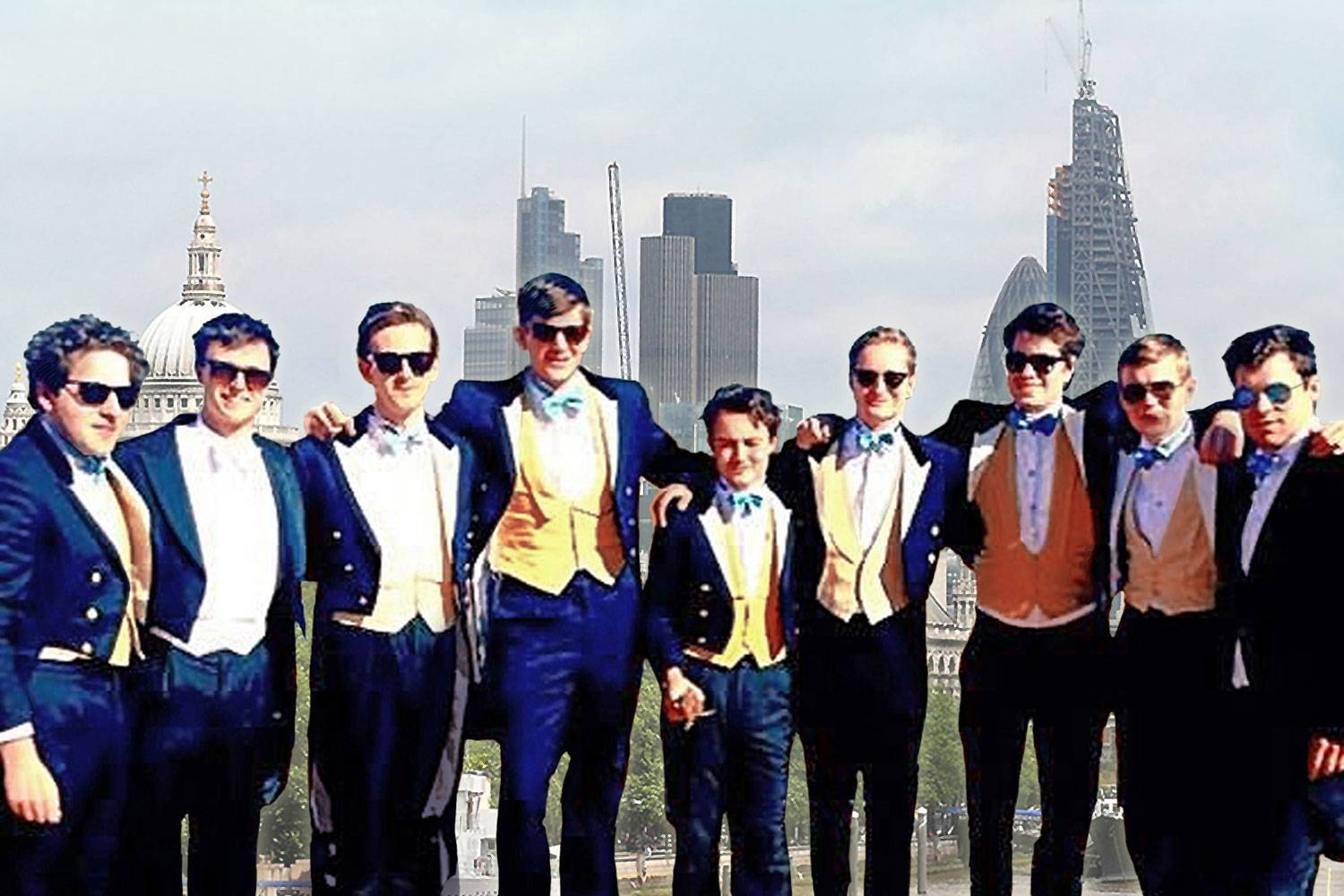University blues: Why this Bullingdon snap is just the beginning for depressing news about Oxford’s narrow demographic
Freshers starting at Oxford have more to worry about than the Bullers

Your support helps us to tell the story
This election is still a dead heat, according to most polls. In a fight with such wafer-thin margins, we need reporters on the ground talking to the people Trump and Harris are courting. Your support allows us to keep sending journalists to the story.
The Independent is trusted by 27 million Americans from across the entire political spectrum every month. Unlike many other quality news outlets, we choose not to lock you out of our reporting and analysis with paywalls. But quality journalism must still be paid for.
Help us keep bring these critical stories to light. Your support makes all the difference.
At the height of a blazing hot day on the South African veldt, nine men pose casually for a photograph. Unified by their sunglasses, pale skin and eccentric desert dress choice, they appear a rum but merry bunch. By their feet lie three dozen or so desert sand grouse – the result of a happy day’s hunting. The group in question are past members of the infamous Bullingdon Club - the Oxford University drinking society renowned for its destructive binge-drinking culture and hyper-achieving previous members: David Cameron, Boris Johnson and George Osborne to name a few.
Unsurprisingly, the emergence of this latest ‘Buller’ artefact – the photo was taken sometime this year and the members it captures attended Oxford in the last four or five years - prompted responses from several corners. A tabloid story cast aspersions on the group’s exorbitant lifestyle while an article in the Evening Standard pointed out – calmy and assiduously – that the men in the photo had fared well since their time at university. Five of the nine, it said, now work in banks or funds in the City.
Little surprise there given the connections that young plutocrats traditionally cultivate while still at school, let alone university. More surprising - at least from my point of view and according to other Oxford students I have spoken to who also overlapped with the nine ‘Buller boys’ in question – is how anonymous this group were during three shared years at university. Amongst a relatively small campus – Oxford has around 11,000 undergraduates – those who appear in the photo were virtually unknown to the wider student populace other than when lavishly profiled in the Daily Mail.
Perhaps predictably, these ultra-posh heterosexual males – famed the world over for dressing like Victorian dandies in private for each other’s entertainment – don’t spend much time publicising their activities to the wider student body.
Regretfully, though, that private impulse isn’t shared by all Oxford drinking societies. Oxford’s ‘Stoics’ - another male-members group presided over by a crack team of Etonians - hold a termly drinks party for Oxford University’s students of both sexes. The criteria for who gets an invitation is simple: male friends from the public school network, and female friends from the public school network who are also deemed attractive by the group’s permanent members.
There’s something pretty eugenicist about a group of men rounding up young women exclusively on the basis of their good looks and affluent backgrounds. More than that, groups like Stoics and the Bullingdon send out a sinister message about how students of different sexes and demographics interact – or fail to - at what was recently deemed the sixth best university in the world.
The really worrying news, though, is that the socially divisive behaviour of some Oxford students finds a wider precedent in the miserable figures the University itself publishes annually regarding its own demographic selection.
Oxford has enough to recently answer for simply in terms of the dismal figures it this year published on state versus public school intake. The latest numbers show 57.5 per cent of undergraduate places at the university go to state-educated pupils while 42.5 per cent go to the privately educated. That is an extraordinary statistic given the fact that only 7 per cent of the UK’s children are in private education.
Oxford also has relatively poor figures in terms of its male to female ratio. 55 per cent of students are male, 45 per cent female. And similarly the university itself says that is has a poor proportion of women in senior academic positions. “When colleges first went mixed, the women's colleges showed little hesitation in appointing men to fellowships ... but the former men's colleges have been slow to reciprocate,” the university website admits.
Clearly, it’s not just some of the students that could consider a change in attitude. The Oxford figures aren’t cataclysmic, but they certainly aren’t awe-inspiring. The university has been a seat of power and patriarchy since its foundation sometime in the 10th Century: 24 of the Prime Ministers it has produced are male, whereas the University still has that single (Iron) lady to its name. Not much surprise there given the skewed history of the sexes in the last millenium, but Oxford’s own history of equality pales in comparison with other top UK universities. While UCL has welcomed women since it opened in 1878, Oxford waited until 1920 to do so, and even then admitted only a limited number.
At institutions of tradition, change occurs with almost glacial slowness. There’s no doubt that the Oxford demographic has widened in the last thousand years, but the figures still suggest a reticence to represent the real statistic proportions of the United Kingdom. And if the Bullingdon is to keep producing leading politicians and big-earning bankers, they could at least make room for a few women at the top.
Join our commenting forum
Join thought-provoking conversations, follow other Independent readers and see their replies
Comments